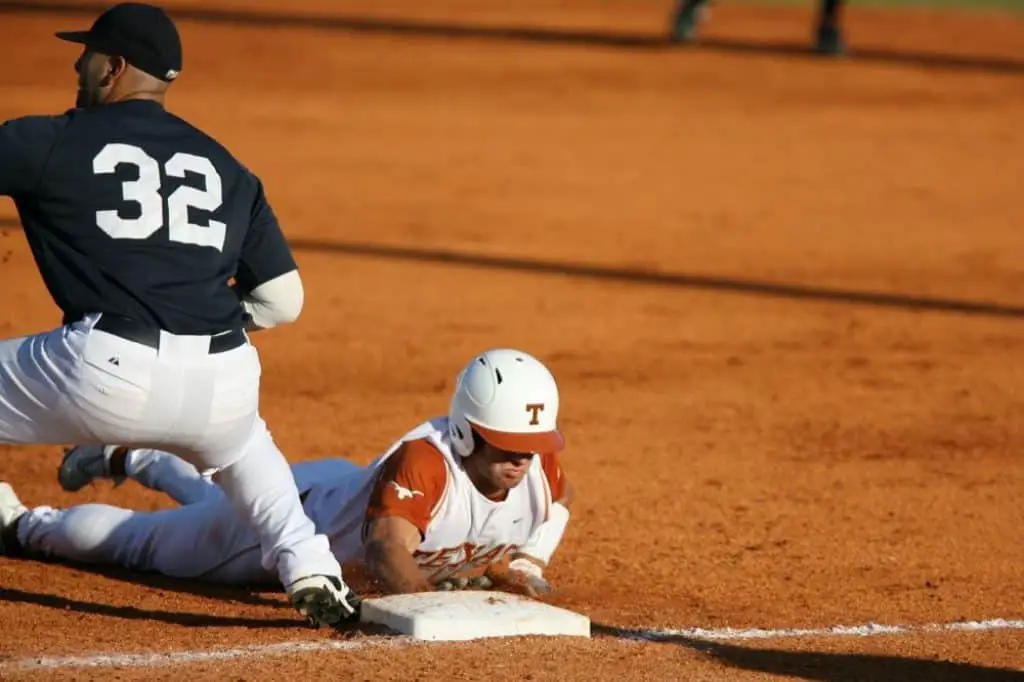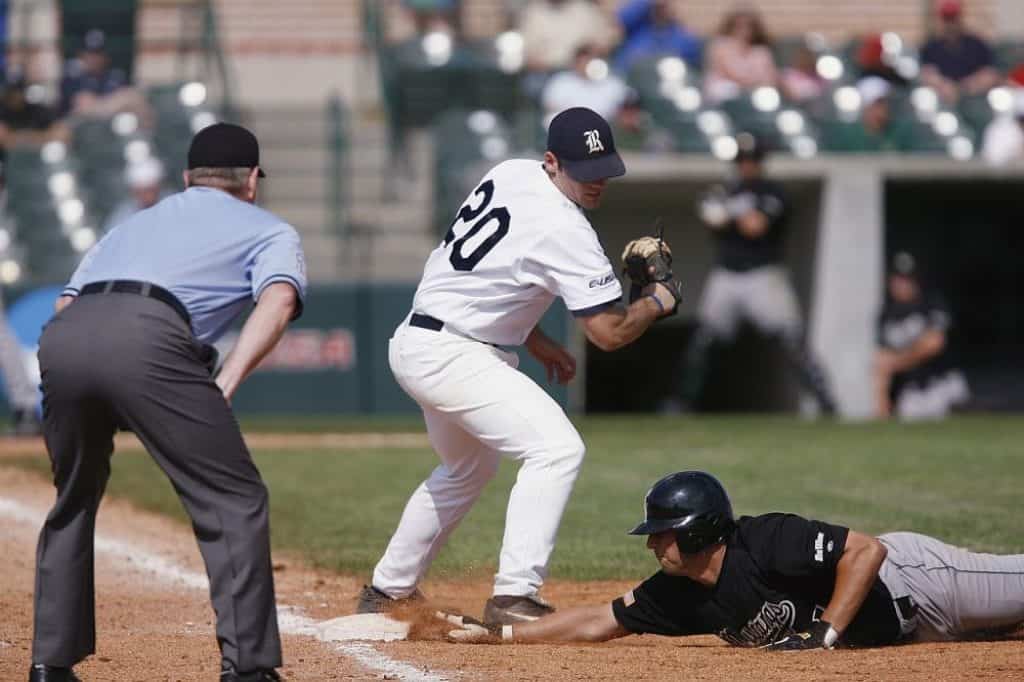Can You Slide Into First Base In Baseball? (Answered)
Good baserunning is crucial to your team winning a ballgame and, above all, lots of fun.
One of the best feelings in baseball is crossing the home plate and scoring a run for your team.
However, running is not as easy as it may seem.
There’s a lot a runner has to pay attention to and decide on in a split second, including when to go for it, when to hold up, and when to slide to the base.
Sliding is often a go-to move whenever there’s a close play.
However, you’ve probably noticed those runners when going for the first base don’t slide but only run through the base.
This causes a lot of confusion, especially among casual fans, with many wondering can you slide into first base in baseball.
Below I’ll try to clear things out and explain anything you may want to know about sliding into first.
Table of Contents
Can You Slide Into First Base In Baseball?

The answer to this probably depends on who you ask.
Some will claim to have heard of the rule making sliding onto first illegal, while others will say the opposite is true.
The actual answer is yes, runners can slide into first base.
The truth is that, even though you’ll rarely see it in a game, there’s nothing stopping players, rules-wise, from sliding into first.
This way of getting to the base is legal in rulebooks of most baseball leagues, including MLB, minors, collegiate, and high school baseball.
One of the most common misconceptions is that the player will be out if they slide to the first.
This, however, is not true, as the player sliding will only be out if he doesn’t reach the first or gets tagged out by the opposing player.
Also, base path rules still apply no matter if the player is sliding or not.
Why Do Baseball Players Never Slide Into First Base?
Even though it’s legal, in most cases, ballplayers will avoid sliding into first base.
There are a couple of reasons for this.
Running Is Faster
Per the rules of baseball, the first base is the only base where the runners are allowed to run through.
With others, a player must stop at the base.
If they immediately return to the base, runners can not be tagged out even if they overrun or overslide the base.
And, of course, running onto the base is a lot faster than sliding into it.
As baseball is often a game decided by the narrowest of margins, every millisecond counts.
After a batter hits the ball, their main goal is to get to the first as soon as possible and touch it before the ball gets there.
The most efficient way to do this is to run through the first, and slow down only after touching the base.
The Play at the First Base is Always the Forced Play
MLB rules state that the runner is out if he fails to reach the base after being forced to advance as the hitter turns into a runner or if a fielder tags him before reaching the next base.
This means that, unlike the first base, the runner on the second is not forced to run to the third if the batter hits the ball.
Nevertheless, as he’s not allowed to run through the third base, he may be tagged out if he steps off the base.
This is why runners usually slide in these cases as it helps them avoid the tag.
However, when going for first, there’s usually no danger of being tagged, so sliding would only slow runners down and put them at a disadvantage.
Less Risk of an Injury
The goal at the first base is to get there as quickly as possible.
So, as the runner goes at the full speed, sliding to reach the base significantly increases the risk of an injury.
Players, especially those highly-paid MLB stars, always do anything they can to avoid an injury and running through the first instead of sliding certainly helps.
Is There Ever a Reason to Slide into First Base?

Having said all of the above, we still occasionally see runners sliding into first base. Sometimes, it makes sense.
If the first baseman is pulled off the bag, sliding into first may help the runner avoid the tag.
Commonly, this happens when there’s a high throw causing the first baseman to jump up or when the ball has been thrown too far to the left or right side moving the first baseman in that direction.
When this happens, the first baseman, in most cases, tries to catch the ball and quickly tag the runner.
By sliding, the runner can get below and avoid the swipe tag and get his foot to the base before the baseman.
Another reason to slide into first is to disrupt the umpire’s ability to make the call of “out” as they can’t see clearly. Sometimes, this can help an out to become a runner.
Why Can You Run Through First Base?
As I already explained, MLB rules state that if he immediately returns to the first base, he can’t be tagged out even if they overrun the base.
As an out at the first is a force out, the run for that base is probably the most important in the game, meaning that everyone usually runs at full speed.
Logically, at full speed, players can’t stop on a dime and stay exactly on a bag. Forcing them to do so would likely increase injury risk and give an unfair advantage to the defense.
Nevertheless, after running through the first base, the runner can’t proceed to the second unless he feels that there’s a safe way to get there.
Otherwise, he loses the run-through protection and becomes a live runner and may be tagged out.
Conclusion
Baseball can often be confusing, especially to new fans.
The rules of sliding into the first base are, perhaps, one of those things that may be hard to understand to novice game enthusiasts.
The reason for this is that that particular play is so rarely seen at an actual game.
However, the move itself is not illegal and is allowed at almost all levels of baseball. Still, we rarely see players do it.
This is because it would rob them of the advantage they have since they can run through the first base.
Still, in some game situations, like when the first baseman is off the bag, sliding into first is very useful and practical.




